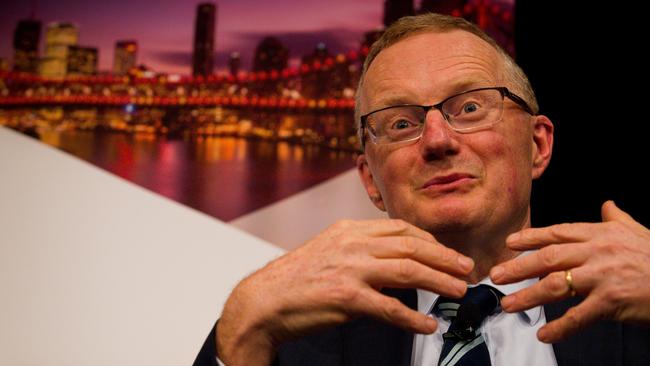Treasury, RBA bank on growth in services
Both Treasury and the Reserve Bank are looking to the services sector to drive Australia’s productivity and growth.

Both Treasury and the Reserve Bank are looking to the services sector and business services in particular to drive Australia’s productivity and growth once new production generated by the resources boom matures.
The two peak economic institutions have a new focus on the economics of firms and sectors as they try to come to grips with the nature of structural change in the economy.
The strength of services sectors has been behind the dynamism of the economies of Sydney and Melbourne, which have now been driving Australia’s economic growth over the past five years as resource construction comes to an end, dragging down the economies of the mining states.
The performance of Melbourne, in particular, has been notable as it has long had the greatest concentration of Australia’s beleaguered manufacturing industry and had, aside from hosting the Australian headquarters of BHP and Rio Tinto, little direct stake in the resources boom.
Reserve Bank governor Philip Lowe recently said he was often asked where future jobs growth would come from.
“The short answer is that it will come mainly from where it has come from in the recent past — from the myriad of occupations in the services sector. Some of these jobs will attract relatively low rates of pay, but, if our experience is a useful guide, more of these jobs will be higher-paying high-skill jobs,” he said.
“It’s in our national interest to lift productivity growth in these industries and to develop more higher-paid high-skill jobs. Technology is important here, but so too is investment in human capital. It seems probable that the next wave of growth in Australia will be driven by us building on our expertise in services. This requires investment, including in human capital.”
The head of the Reserve Bank’s economic analysis department, Alexandra Heath spelt out the Reserve Bank’s thinking on the services sector in a speech last week.
She said the growth of business services was being propelled by the reorganisation as business became more specialised in its areas of comparative advantage while outsourcing non-core functions.
For every additional dollar of goods production, about 20 cents is delivered by business services, up from almost nothing 50 years ago.
Business services has risen from less than 20 per cent of national value added to more than 25 per cent in the last 25 years as goods production, which includes manufacturing, mining and construction has declined.
Heath argues that supply chains have been getting longer, as both companies and their suppliers outsource elements of their operations. To the extent that this reflects companies achieving economies of scale in their areas of specialisation, it should be bring rising productivity.
She says employment growth in business services has been led by high skilled staff making greater demands than any other sector of the economy on the competencies of systems analysis, persuasion, originality, written expression, complex problem solving and critical thinking.
Reserve Bank analysis shows starkly different trends between business and household services which, between them, account for almost 80 per cent of employment. Business services are driven by high skilled and high paying positions, whereas household services are dominated by low-skilled and low paid jobs.
The analysis classified 300 services occupations into high, average and low paying positions. In business services, there has been rapid growth of high paying jobs, with about 850,000 positions created since 2000, compared with a little under 300,000 average paying jobs and about 150,000 low paying jobs.
In household services, by contrast, there have been 700,000 low paying jobs, 350,000 high paying jobs and 300,000 at average wages.
Heath noted that the predominance of high paid jobs in business services did not automatically translate to higher pay growth, which turns on the strength of labour supply. Tertiary institutions have been turning out large volumes of qualified graduates.
“There are pockets of rapid wage growth in areas like IT security and cloud computing services, where there’s been huge demand and supply hasn’t kept up. However legal services is an area where there’s been a huge increase in supply,” she said.
Treasury has also been examining the role of the services sector in driving productivity. Economists in the department’s new structural reform group have written a paper examining the impact of changes in the composition of the workforce on productivity.
There has been concern that productivity would decline as labour shifts from the highly capital intensive mining to the rest of the economy with growth driven more by labour intensive services.
However the study found that the growth in the productivity of the resources sector as production ramps up will more than offset any decline from the entry of former mine workers to the rest of the economy.
The resources sector is only 8 per cent of value added, but has accounted for about a quarter of Australia’s productivity growth over the past five years, while services have provided half.
“While the services sectors continue to attract more and more labour, their aggregate productivity level is similar to all other sectors of the economy bar mining and utilities and their combined within-sector productivity growth is tracking at similar speeds to that of the whole economy,” the study says.
Over the past 25 years has averaged 1.7 per cent, in line with the economy-wide average.
“Despite the attention given to mining as a determinant of Australia’s productivity performance, it is the services sectors that will continue to play a key role in driving future aggregate productivity growth,” the study says.
Mirroring the sentiments of the Reserve Bank, the paper commented that “efforts to increase productivity in the services sectors will grow in importance into the future:.”
The profit figures feeding into last week’s national accounts support the account of the services sector growing strongly.
Professional services achieved profit growth second only to resources, with the Australian Bureau of Statistics’ broad measure of profit rising 50 per cent over the year, while sales growth of 8 per cent was only surpassed by resources and utilities sectors. Finance also achieved profit growth of 47 per cent while other services were up by 38 per cent.




To join the conversation, please log in. Don't have an account? Register
Join the conversation, you are commenting as Logout